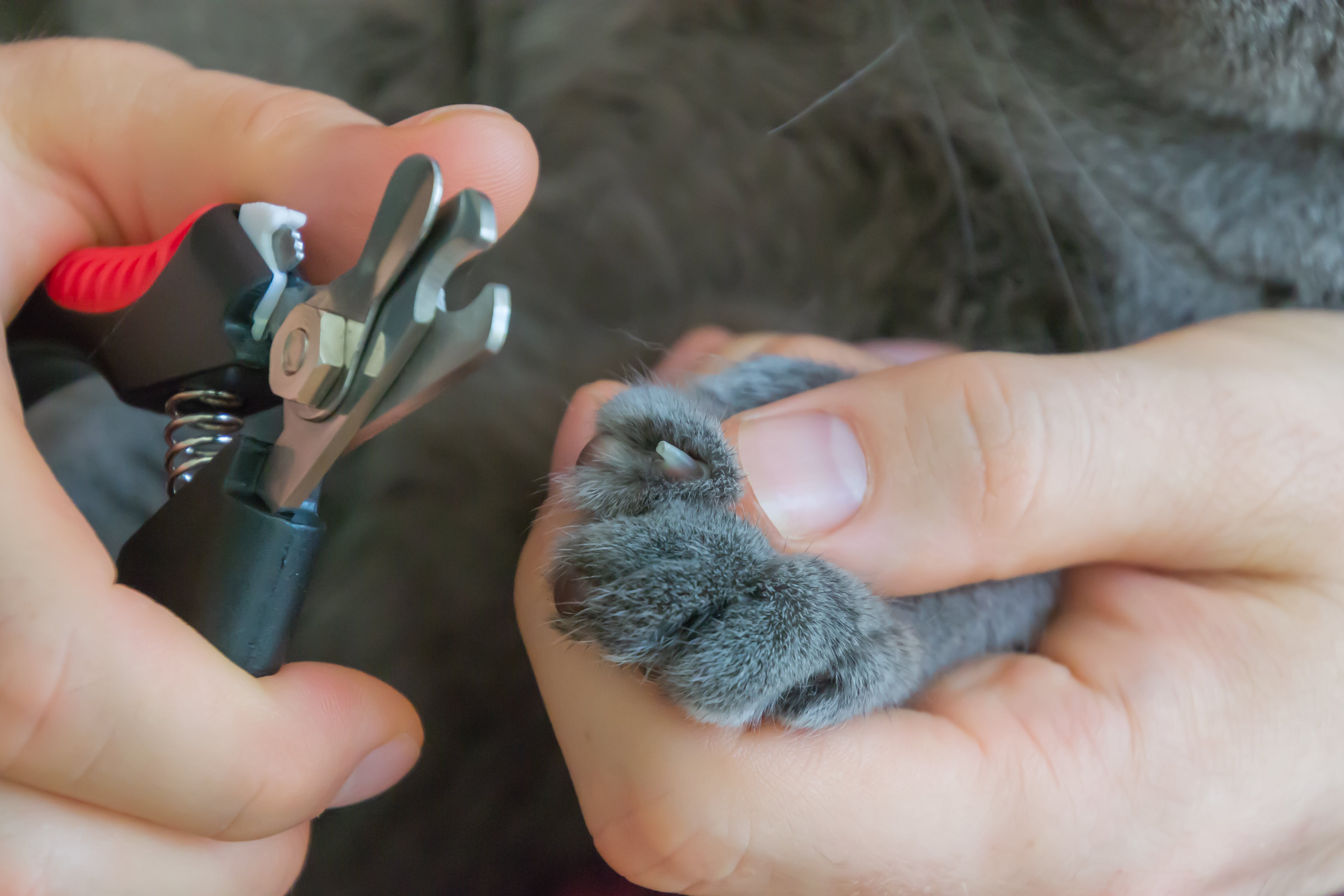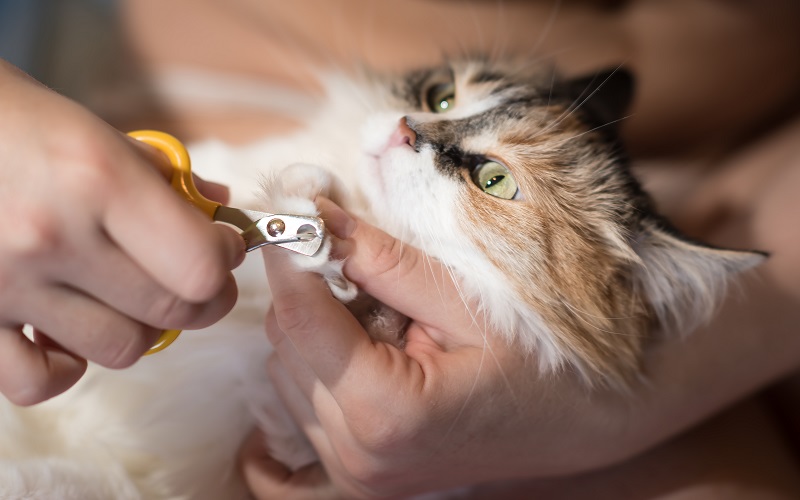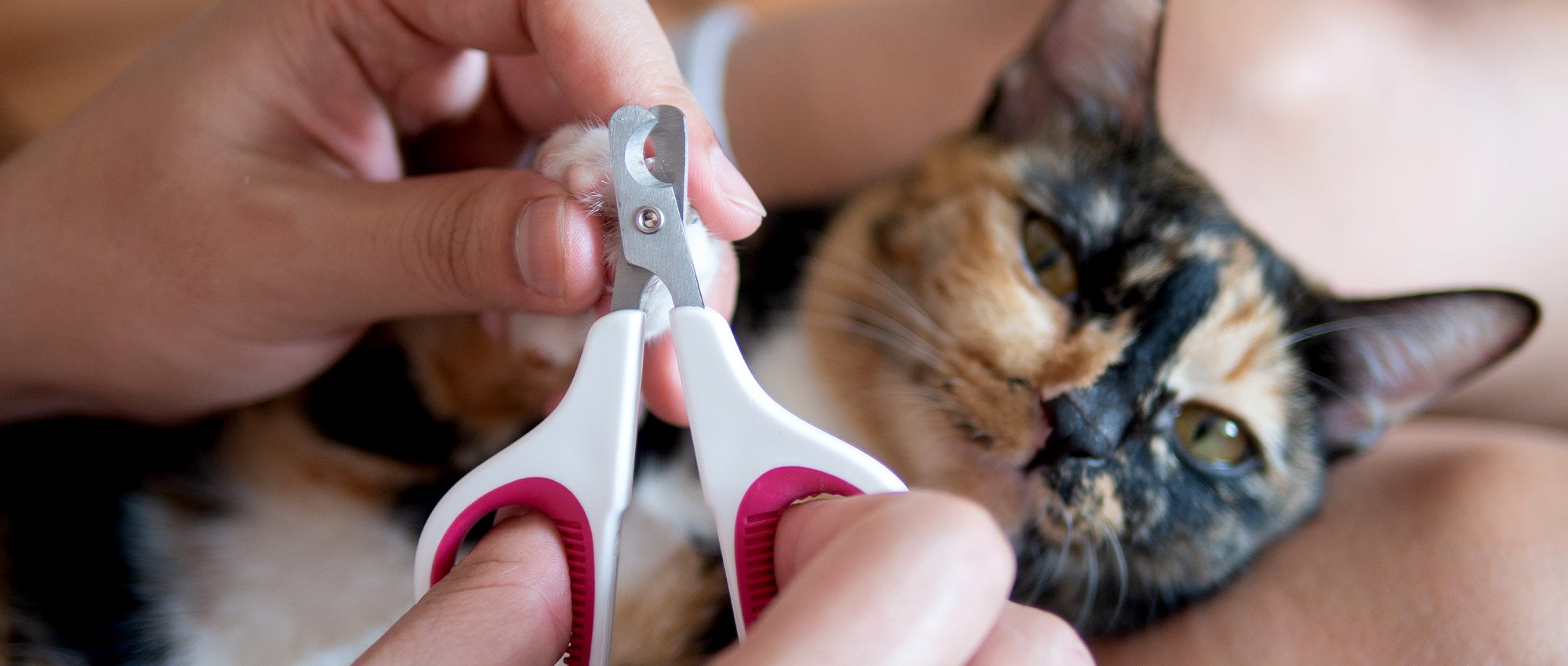Yes, you should cut your cat’s nails. Trimming helps prevent discomfort and damage to furniture.
Cats naturally scratch to maintain their claws, but indoor cats often need assistance. Regular nail trimming is essential for their comfort and health. Overgrown nails can cause pain and lead to infections. Trimming also protects your furniture from scratches. Use a proper cat nail clipper and ensure you avoid the quick, the sensitive part of the nail.
Start slowly and reward your cat to make the process smoother. Regular trims every few weeks will keep your cat happy and your home intact. Proper nail care is crucial for a healthy, happy cat.
Importance Of Cat Nail Care
Regular nail trimming can prevent painful issues for cats. Long nails can get stuck in fabrics. This may cause injury. Trimmed nails also reduce the risk of infections. Nails can grow into the paw pads if left too long. This is painful for cats.
Trimming nails helps protect your furniture. Cats with long nails may scratch more. Shorter nails mean less damage to your home. Cats can also be calmer with trimmed nails. They feel more comfortable and less stressed.
Tools You Need
Trimming your cat’s nails helps prevent overgrowth and painful injuries. Essential tools include cat nail clippers and styptic powder. Regular grooming sessions ensure a happier, healthier pet.
Clippers
Clippers are essential for trimming your cat’s nails. Opt for high-quality clippers designed for pets. Human nail clippers can hurt your cat. Scissor-style clippers provide better control. They are safer to use. Make sure the blades are sharp. Dull blades can cause pain.
Styptic Powder
Styptic powder helps stop bleeding. Accidents can happen while clipping nails. This powder is a quick fix. Apply it directly to the nail. It stops bleeding almost immediately. Always keep it handy. Your cat will feel better faster.
When To Trim
Cat nails should be trimmed regularly to prevent overgrowth and potential injury. Always check for sharp tips and trim when needed. Regular maintenance keeps your cat comfortable and furniture scratch-free.
Signs It’s Time
Cats need nail trims when their claws get too long. Look for scratches on furniture or your skin. If the claws get stuck in fabric, it’s time. Watch for clicking sounds when your cat walks on hard surfaces. Check if the claws are visible when the cat is resting. Long nails can cause pain and injuries.
Ideal Frequency
Trim your cat’s nails every two to four weeks. Indoor cats may need more frequent trims. Outdoor cats might wear their nails down naturally. Always check the nails every month. Adjust the frequency based on your cat’s activity. If unsure, ask a vet for advice.
Credit: www.quora.com
Preparation Steps
Prepare by gathering necessary tools, such as nail clippers and a styptic powder. Calm your cat with gentle petting before starting.
Choosing A Quiet Spot
Find a quiet spot at home. This helps your cat stay calm. Make sure there are no distractions. Turn off loud devices. Close the windows to reduce noise. This setting helps your cat feel safe. The calm atmosphere will make nail trimming easier.
Getting Your Cat Comfortable
Gently pet your cat to make it comfortable. Let your cat sniff the nail clipper. This helps it get used to the tool. Hold your cat in your lap. Speak in a soft voice to soothe it. Give it treats to create positive feelings. Patience is key during this step. If your cat seems scared, take a break.
Proper Trimming Technique
Place your cat on your lap. Make sure your cat feels comfortable. Hold your cat gently but firmly. Use a calm voice to soothe your cat. Reward your cat with treats. This helps your cat stay calm.
Use a sharp nail clipper. Cut only the white tip of the nail. Avoid cutting the pink area. The pink area is called the quick. Cutting the quick can cause pain and bleeding. Trim a small amount at a time. Check each nail before cutting.

Credit: yumove.co.uk
Dealing With Resistance
Trimming your cat’s nails can prevent furniture damage and accidental scratches. Regular nail care helps maintain your cat’s health and comfort.
Handling A Nervous Cat
Cutting a cat’s nails can be a challenge. Some cats get very nervous. A good way to help is to create a calm environment. Use a soft voice and gentle touches. Take breaks if needed. Never force your cat to stay still. Patience is key. Sometimes, it helps to wrap your cat in a towel. This makes them feel safe. Always make sure to avoid sudden movements. Your cat will feel more secure.
Using Treats And Rewards
Treats can make a big difference. Offer a treat before and after nail cutting. This helps your cat associate the process with good things. Use their favorite treats for best results. Praise your cat often. Positive reinforcement works well. Over time, your cat will be more relaxed. Rewards make the process smoother. Try to be consistent with the rewards. This builds trust between you and your cat.
Common Mistakes
Many cat owners neglect regular nail trimming, leading to overgrown claws that can cause pain and damage. Proper nail care ensures your feline’s comfort and health.
Cutting Too Short
Cutting a cat’s nails too short can cause pain and bleeding. The quick is the sensitive part inside the nail. It’s important to avoid cutting into the quick. Always trim just the tip of the nail. This helps prevent injury and keeps your cat comfortable. Regular trimming can make the process easier over time.
Using The Wrong Tools
Using the wrong tools can make nail trimming difficult. Human nail clippers are not suitable for cats. Pet nail clippers are designed for animal nails. They provide a better grip and cleaner cut. Always choose the right tool for the job. This ensures a smooth and safe trim for your cat.
Aftercare Tips
After trimming, check your cat’s paws. Look for any signs of bleeding. Use a styptic powder if you see blood. This helps to stop the bleeding. Apply gentle pressure to the area. Keep your cat calm during this process. Reward your cat with a treat afterward.
Trim your cat’s nails regularly. This helps to keep them healthy. Create a routine schedule that fits your cat’s needs. Use proper tools for trimming. Make sure your cat feels comfortable. Give your cat breaks if needed. Always end with a positive experience.

Credit: www.petbarn.com.au
Frequently Asked Questions
What Happens If You Don’t Trim Your Cat’s Nails?
Untrimmed cat nails can become overgrown, causing pain and injury. They may also damage furniture and household items. Regular trimming ensures comfort and reduces the risk of infections.
Is It Necessary To Trim A Cat’s Claws?
Trimming a cat’s claws is not always necessary but can prevent damage and reduce the risk of injury. Regular trims help maintain comfort and health.
Do Scratching Posts Trim Nails?
Scratching posts help cats maintain their nails by removing outer layers. They don’t fully trim nails but can reduce length. Regular trimming is still needed.
How Do You Properly Cut A Cat’s Nails?
To properly cut a cat’s nails, use sharp clippers and trim the tips. Avoid cutting the quick. Gently hold the paw, press the pad to extend the nail, and clip. Reward your cat for good behavior.
Conclusion
Regularly cutting your cat’s nails is essential for their health and comfort. It prevents overgrowth and painful injuries. Use proper tools and techniques for a stress-free experience. Consult your vet if you’re unsure about the process. Keeping your cat’s nails trimmed contributes to their overall well-being and happiness.

Hello, this is Frank Swanson, the owner, and operator of Pet Info Hut. I created this website as a way to share my love of pets with the world. I have over 7 years of experience working with animals, and I have a passion for helping people care for their pets. I hope that you find my website useful and informative. Thanks for visiting!
